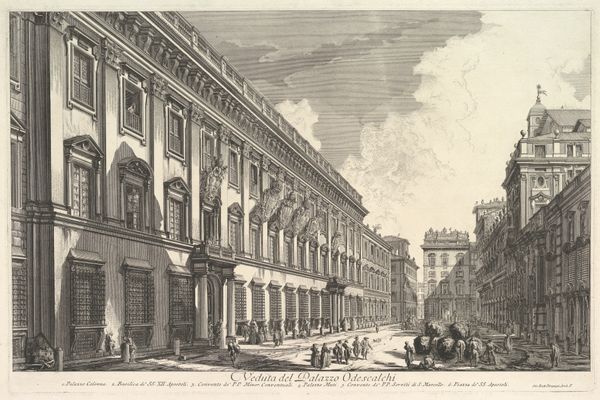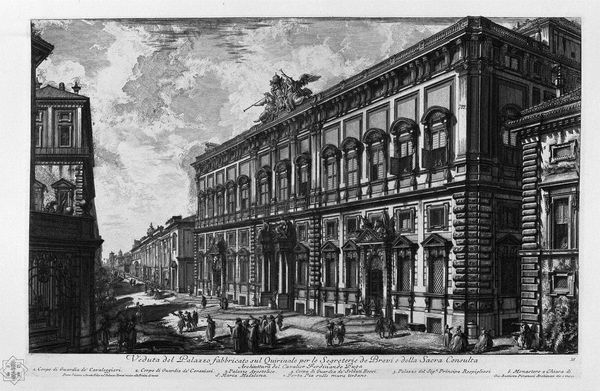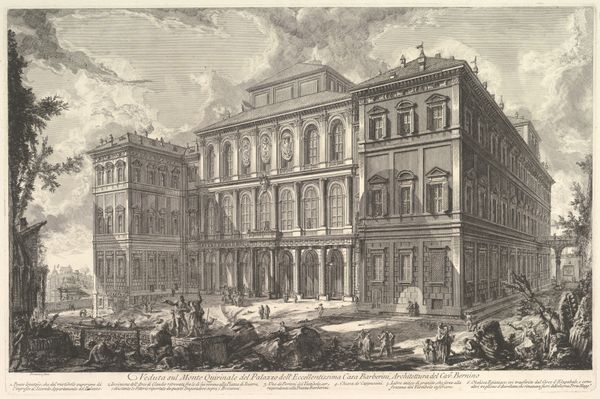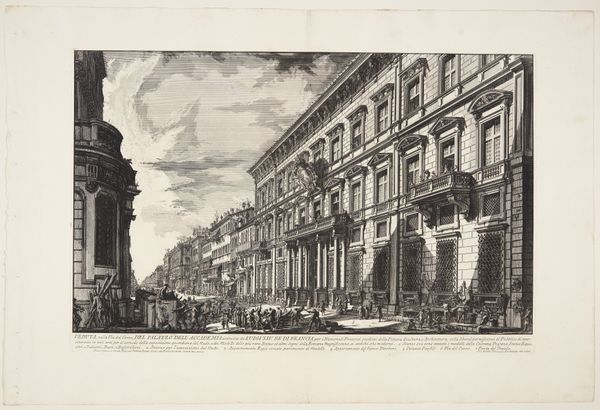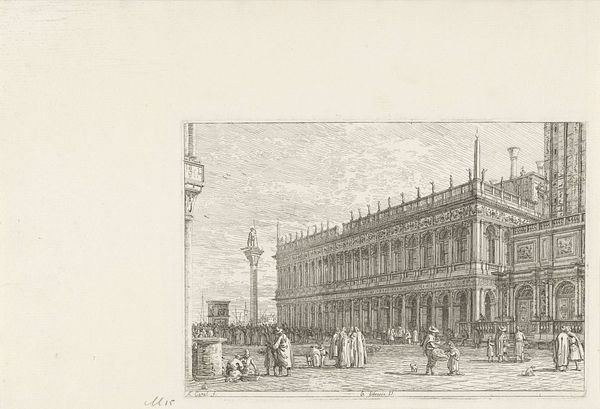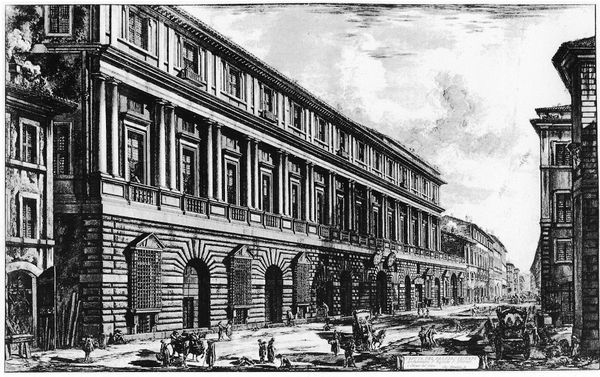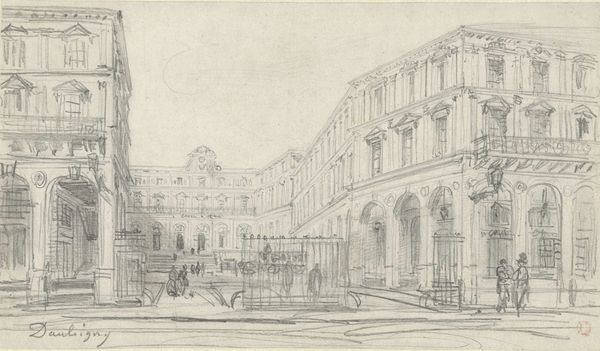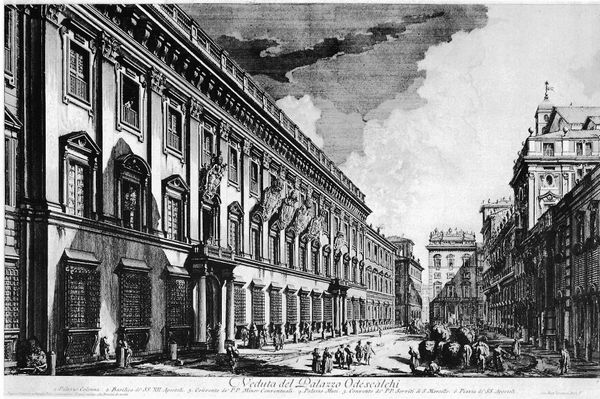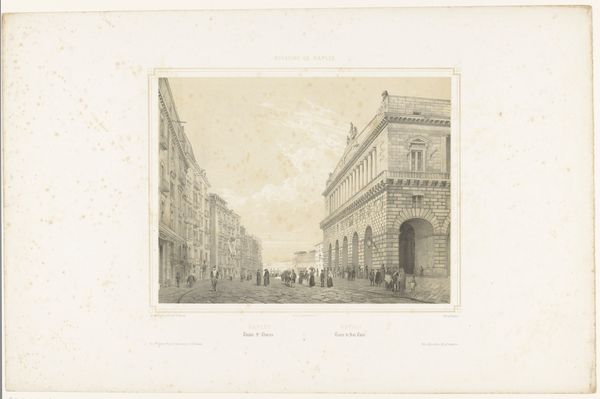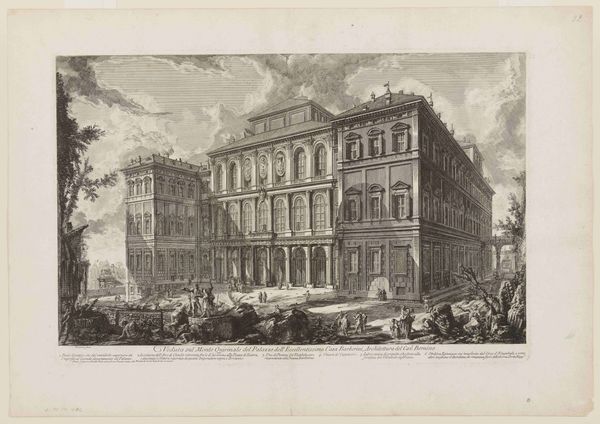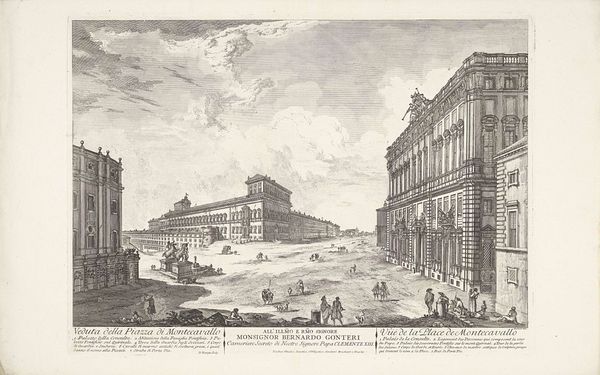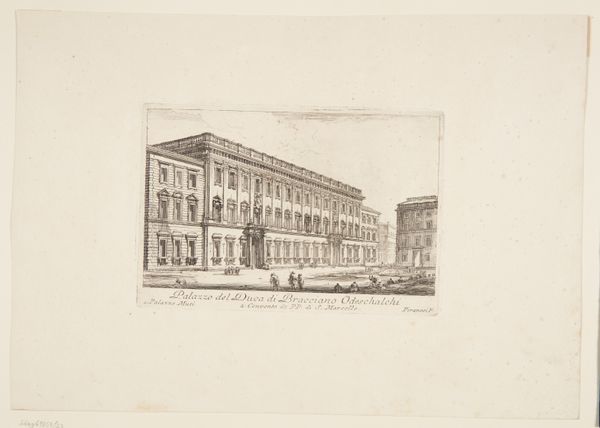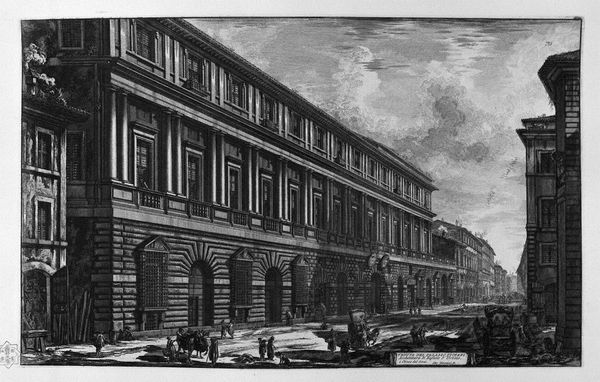
View of the Palazzo della Consulta on the Quirinal housing the Papal Secreteriat, from Vedute di Roma (Roman Views) 1720 - 1780
0:00
0:00
drawing, print, engraving, architecture
#
drawing
#
baroque
# print
#
cityscape
#
engraving
#
architecture
Dimensions: Sheet: 19 1/8 x 27 9/16 in. (48.5 x 70 cm) Plate: 16 x 24 7/16 in. (40.6 x 62 cm)
Copyright: Public Domain
Editor: This print, "View of the Palazzo della Consulta," made by Giovanni Battista Piranesi sometime between 1720 and 1780, showcases a Roman cityscape. The level of detail is astounding, but it almost feels staged, somehow... almost like theatre design. What stands out to you? Curator: The 'staged' quality you observe resonates. Piranesi was a master of *Vedute*, these detailed 'views' of Rome that became highly sought-after souvenirs. But he wasn't simply documenting reality; he was constructing an image, laden with symbols and evoking a certain emotional response. Look at the figures populating the scene; they are carefully placed, almost like actors in a play, accentuating the grandeur and power of the Palazzo. Note, too, how Baroque architecture frequently employs dramatic angles. Editor: So it's less about faithful representation and more about…conveying a message? What's being communicated? Curator: Power, permanence, the weight of history. The Palazzo della Consulta housed the Papal Secretariat, and this print becomes a visual assertion of Papal authority. The Baroque style, with its dramatic ornamentation and imposing scale, reinforces this message. But consider also the tradition of the *Vedute*. These images fed a Northern European appetite for Rome as a symbol of imperial might and spiritual significance. Editor: That makes sense. The Palazzo becomes more than just a building; it's a symbol of cultural and political dominance, packaged for consumption. Curator: Precisely! Piranesi wasn’t just an artist, he was an interpreter and a manipulator of cultural memory, shaping how Rome, and the Papacy, were perceived for generations. Have your impressions of the work evolved? Editor: Absolutely! It’s far more complex than I initially thought; the image resonates far beyond what it initially presented. I see that Baroque's visual symbols do indeed carry quite some weight, even centuries later.
Comments
No comments
Be the first to comment and join the conversation on the ultimate creative platform.
